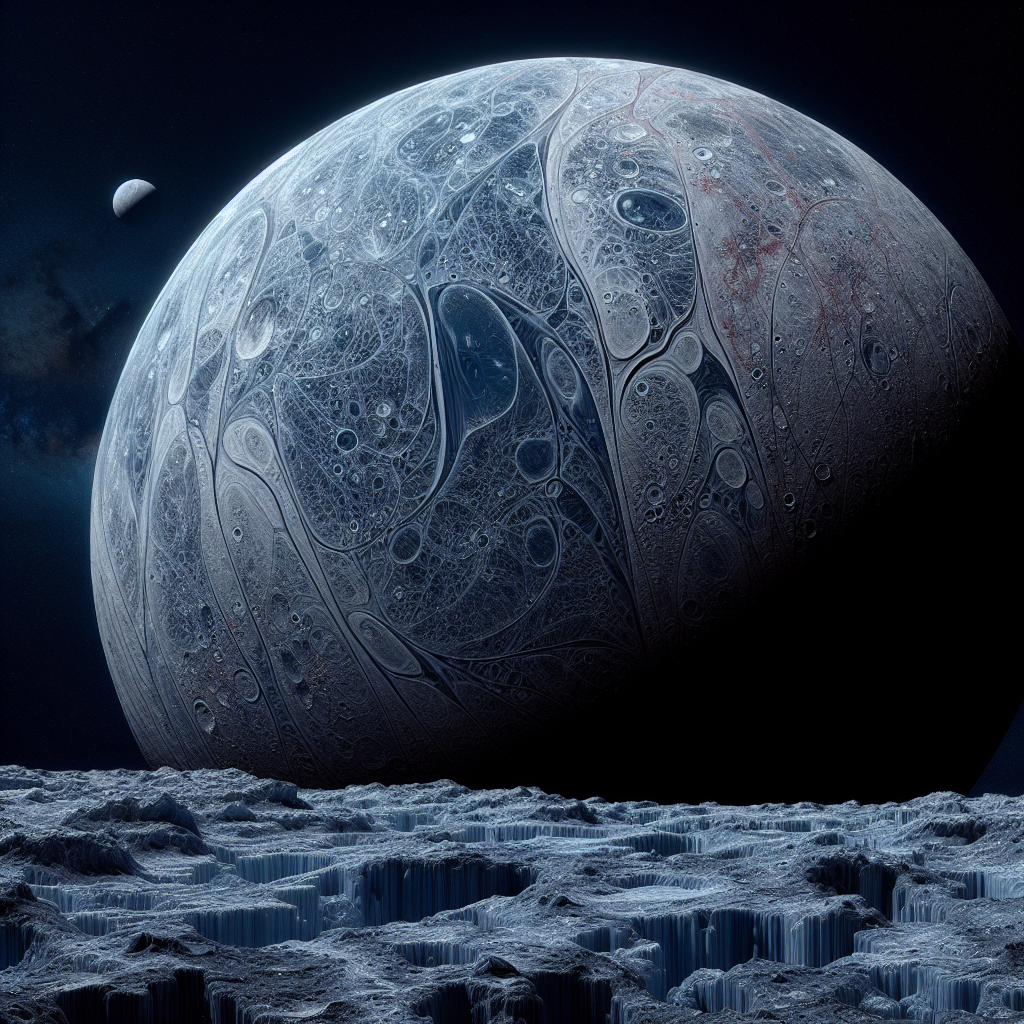Europa: A Moon Wrapped in Ice and Mystery
Imagine standing on a blanket of ice so vast, it spans a whole world. Beneath your feet, an ocean older than any sea on Earth whispers secrets in the dark. This is not a scene from a distant galaxy in a sci-fi saga. This is Europa, Jupiter’s moon, encased in ice yet teeming with possibilities that could rewrite our understanding of life in the cosmos.
Europa, discovered by Galileo Galilei in 1610, is not just another celestial body. It’s a beacon for scientists and dreamers alike. Encased in a thick shell of ice, Europa holds a salty ocean beneath its frigid surface, potentially twice as voluminous as all of Earth’s oceans combined. This subsurface ocean makes Europa one of the most promising places to search for extraterrestrial life within our solar system.
The Lure of Europa’s Hidden Ocean
The fascination with Europa lies in its mysterious, ice-bound ocean. Scientists believe that the moon’s ocean might contain hydrothermal vents, similar to those on Earth where life thrives in complete isolation from the sun. Imagining life forms adapted to such extreme conditions on Europa isn’t just fantasy; it’s a possibility grounded in what we understand about life’s resilience.
Moreover, the icy surface of Europa is etched with reddish-brown streaks, hinting at chemical salts and possibly organic compounds. These markings could be evidence of materials from the ocean below, pushed up through cracks in the ice, potentially offering a tantalizing glimpse into the moon’s subterranean secrets without having to drill through miles of ice.
Humanity’s Quest to Unravel Europa’s Secrets
Our quest to peel back the layers of Europa has been ongoing, with missions like NASA’s Galileo spacecraft, which provided detailed images of the moon’s icy surface and hinted at the chaotic terrain indicative of a dynamic ocean beneath. The future holds even more promise with missions like NASA’s Europa Clipper, set to launch in the 2020s. This mission aims to swoop around Europa, collecting data to confirm the presence of the hidden ocean and its depth and salinity, and scanning its icy shell for subsurface lakes that might exist.
Europa Clipper is equipped with cameras and spectrometers to map the moon’s surface in high definition, ice-penetrating radar to determine the thickness of the ice shell, and a magnetometer to measure the strength and direction of its magnetic field, which will help determine the depth and salinity of its ocean.
A Personal Reflection on the Wonder of Europa
As I stand under the starlit canopy of the Northern Arizona sky, telescope pointed at the heavens, I often ponder the icy enigma of Europa. It’s a world that challenges our perceptions, a silent orb dancing through the void, holding within it the potential answers to profound questions about life’s existence beyond our pale blue dot.
Europa represents more than just scientific curiosity; it symbolizes hope, the enduring quest for knowledge, and the unyielding human spirit that looks to the stars and sees not just light, but possibilities. The thought that somewhere, beneath layers of ice on a moon far from the sun, life might be thriving in dark oceans is a testament to the incredible adaptability and resilience of life, and a reminder of how much remains unknown in our vast, beautiful universe.
Europa beckons, and we are listening, ever eager to uncover its secrets and perhaps, in the process, learn something profound about the cosmos and our place within it.


